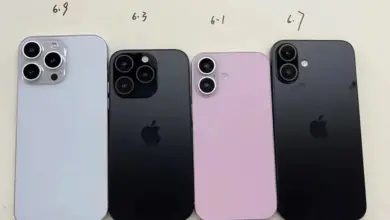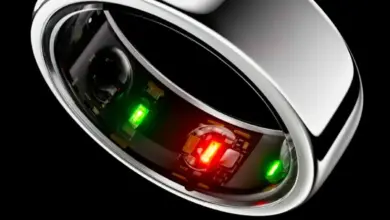Mobile payments for small business
Imagine you’re in a mad rush to get to the office for a meeting, but need to sate your caffeine addiction. You arrive at the best café en route to find it’s crawling with customers waiting impatiently for their morning fix. Already pressed for time, you cut your losses, get a rubbish coffee next door and arrive at the meeting flustered.
It was this experience that prompted Matt Peterson to start TXT4Coffee, a notification system that rewards those who plan ahead with the ability to skip the queue. Users create an account online and top it up with a credit card. When they need a coffee, they then SMS their order to a café of choice and arrive five to 10 minutes later with a flat white waiting for them. At the end of the day, the café reconciles with the provider’s database and claims what they’re due. The customer’s happy and the café wastes less time fumbling with change – all thanks to a simple mobile transaction.
Mobile payments have yet to filter into the mainstream in Australia. Given the rate of smartphone uptake amongst consumers, as well as the growing presence of near field communications (NFC) systems that allows consumers to pay for goods by simply tapping their credit card on a piece of hardware, it’s clear that the market is geared to take off.
Nothing new
Mobile payments initially became popular in developing economies. Unreliable or unattainable banking systems drove the need for a method of payment that anyone with an old Nokia could afford.
“Australia is a very advanced western civilisation, but if you look at places like Indonesia, for example, there are still 60 million people there who don’t have bank accounts,” says Tarik Husain, business director for mobile commerce at Sybase 365. “The banks can’t effectively look after a customer if she doesn’t make enough money for them to want her on their systems.”
As it was much simpler to get a pre-paid mobile than a bank account, this became the basic transaction technology.
“In a market like Indonesia, you’ll see that there are hundreds of small retailers by the side of the street that will never be given traditional point of sale system from a bank,” says Husain. “Mobile payments have taken off there because that street seller is happy to take mobile to the mobile, person to person payments all day. At the end of the day, he can cash that out or link it to a bank account if he’s lucky enough to have one.”
Where’s the appeal?
In an economy like Australia’s, where a bank account isn’t considered a luxury, the appeal of mobile payment systems has more to do with convenience than a necessity, both for the merchant and the customer.
“A plastic credit card contains three tracks of data encoding numbers. The three tracks can be put onto a mobile phone and be used to pay for things as we do today using a credit or debit card. It’s simply a question of storing digital information,” he says.
Husain identifies South Korea and Japan as markets in which mobile payments have been widely adopted based on the appeal of the convenience they give consumers.
“They saw that it was more convenient since the consumer is already carrying a phone, for him to buy a train ticket, pay for a taxi or a cup of coffee, using this one device instead of carrying a wallet,” he says. “It’s easy for me to tap my phone and get a coffee, as I don’t have to fumble with change.”
In emerging markets, mobile payments have evolved in the form that Peterson’s TXT4Coffee business model adopted; using the balance on a pre-paid mobile phone account to make small purchases. Sybase 365’s Husain explains that in Australia, it’s likely to take one of two forms. The first takes advantage of the NFC hardware recently adopted by banks to enable contactless credit card payments.
“NFC as a card or phone-based solution, is not yet fully defined as a standard,” says Husain, to explain consumer reticence with respect to its uptake. “So that’s still working its way up. I wouldn’t want to buy everything over an NFC phone, but people do trust low-value payments on NFC technology.”
He outlines another system in which consumers enter their mobile number into a point of sale device, which prompts a unique pin code for the transaction to be sent to their phone via SMS.
“In that case, we’ve linked your phone number to the point of sale system in that retailer, and that can then be charged to whatever one of the back end payment products you’ve linked to that, whether it’s a credit card or a debit card,” he explains.
From a merchant perspective, the real appeal of offering mobile payments is simplicity, both with respect to implementation and transactions.
“The good thing for small businesses is that there is no barrier for mobile payment systems. They don’t have to have very deep pockets like big organisations to look at mobile payments,” he says.
Current uses
For Australian banks, mobile is currently more about consumer experience and marketing than transactional convenience.
“The banks are focusing on the mobile as a channel, and not just as a transactional device,” says Husain. “The emphasis right now is on consumer experience. It’s very important for Australian consumers to bank on their iPhone and iPad and PC, so the banks are rightly focused on mobile banking, but that isn’t just allowing me to pay my bill on my phone, or do a balance enquiry, it should be and is becoming much more than that.”
Regardless, some banks do now offer mobile payment solutions to merchants. One example is the recent mobile implementation of Commonwealth Bank’s eVolve service, which allows small businesses to take credit cards or scheme debit payments on their smartphone
“They key the customer’s card number and payment amount into the application, and process the payment that way,” says Andrew Cheesman, general manager of merchant solutions at Commonwealth Bank. “It provides an online authorisation for that transaction, so the tradesperson or market stall holder knows immediately that the transaction is authorised, and they can release their goods and services.”
Instead of waiting for bank products to evolve to meet his needs, TXT4Coffee’s Peterson opted to use a tried and tested online payment service and developed his own proprietary mobile system around that.
“We have a credit card gateway for customer top-ups, then we use our database to calculate how much they’ve spent in which cafés,” he explains. “When people go online and register, they can actually find their favourite coffee store. They can find their order, and then save that as a favourite with five different codes. The code might be ‘Matt01′, and I’ll say that means a flat white at John’s Espresso.”
When customers need to order a coffee, they sign in, either online or via the services Android or iPhone apps, and enter the required code. This results in an order being sent to a specified café, while their account is charged with the cost.
“We designed it backwards so that the customer has the onus to pick it up. As soon as the café accepts it, it’s paid for. If the customer doesn’t turn up, the coffee shop has made it, but the transaction has been accepted; they still get paid,” says Peterson.
There are various alternatives to in-phone or prepaid payment models. The most notable example is the Square app for iPhone and iPad, which accepts payments via a credit card reader that inserts into the device’s jack input. While an appealing proposition, CBA’s Cheesman notes that it’s unlikely to take off in Australia.
“Essentially, it’s not compliant with the latest security standards that are applicable in this market, particularly EMV (integrated chip cards),” he explains. “There are alternative providers out there. We are talking to them, and we do think that there’s a potential for that kind of solution in the market. We think it’s going to attract a certain type of merchant, and it will take a while for it to become mainstream here.”
Barriers to uptake
There are some good reasons that mobile payments have yet to take off in Australia in the same way as they have in Indonesia or Japan.
TXT4Coffee’s Peterson notes that his system only works for those who are comfortable with the security concerns around credit card use.
“The first hurdle we found was that it all evolved and had been driven by people who are happy to use credit cards,” he explains. “There are two types of people in the world, the ones who want to use credit cards and the ones who don’t and are really scared of it.”
Sybase 365’s Husain believes the main barrier among credit card users is reluctance stemming from a lack of familiarity with the concept.
“The number one barrier is customer education,” says Husain. “It took us a long time to trust swiping a plastic card and moving away from cash. There’s always an area of the consumer that that will spend some time not trusting the latest payment technologies.”
CBA’s Cheesman takes a similar perspective, citing the only possible barrier to the uptake of mobile payments is that the concept seems new.
“The research that we have done in the last 12 months with both consumers and merchants suggests that consumers are most comfortable in taking payments on bank provided infrastructure,” he says. “This is why I think mobile payments have some way to go before they’re accepted by retailers that have physical infrastructures like shopfronts and EFTPOS. Consumers walking in there are going to feel a lot more comfortable knowing that it’s a bank provided terminal.”
As it stands, Australia is already well equipped with respect to the hardware required for the popularisation of mobile payments.
“All the points of acceptance are there. What you need for mobile payments is the contactless readers that are now in probably 70-80,000 retail outlets across Australia,” says Cheesman “With that infrastructure there, it becomes really easy for people to move to use a mobile phone.”
As the actual technology is still relatively new, its uptake will likely follow a typical adoption curve, with early adopters slowly paving the way for mass adoption further down the track. Given the benefits of existing mobile payment solutions for small businesses, it’s fairly clear who these early adopters are going to be.





